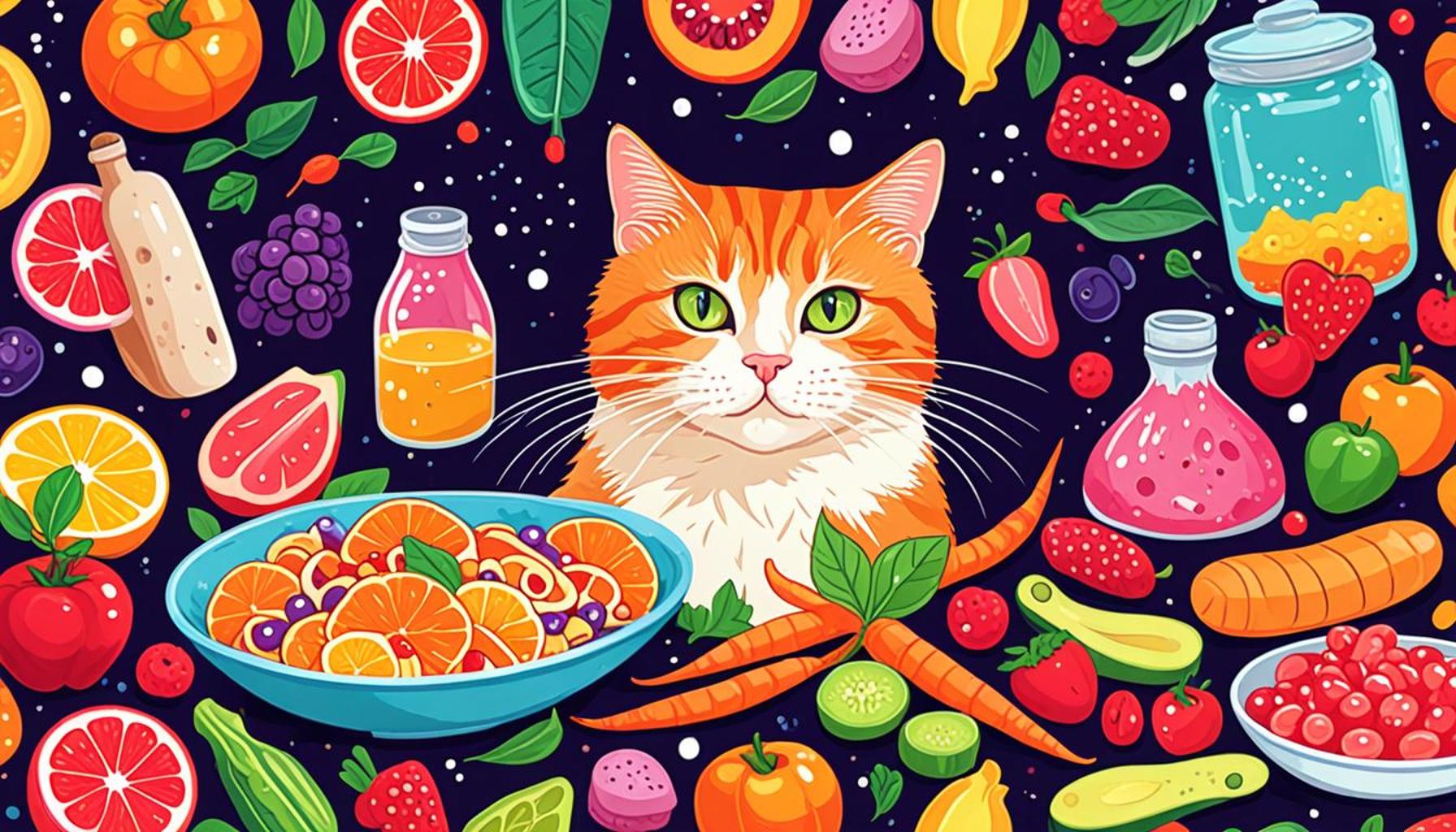How Nutrition Can Help in Weight Control of Pets

Understanding the Role of Nutrition in Pet Weight Control
The challenge of maintaining a healthy weight is a strikingly common issue, not just for humans but for their furry companions as well. Statistics reveal that over 50% of dogs and cats in the United States are classified as overweight or obese, contributing to a widespread epidemic in pet health. This staggering figure underscores the urgent need for pet owners to reassess their pets’ nutrition, identifying it as a cornerstone of effective weight control.
Effective weight management begins with an understanding of proper nutrition. By paying close attention to what goes into their pets’ bowls, owners can play an influential role in curbing obesity rates among their pets. Here are some critical elements for pet owners to consider:
- Quality Ingredients: Prioritize pet foods that feature high-quality protein sources, such as chicken, fish, or lamb, instead of fillers like corn and soy. Not only do high-quality ingredients support muscle health, but they also provide more nutritional value per serving.
- Controlled Portions: Overfeeding is one of the most significant contributors to pet obesity. Measuring food servings using tools like a scale or measuring cup can help owners adhere to recommended amounts based on their pet’s breed, age, and weight. Check with a veterinarian to determine the appropriate serving size.
- Balanced Diet: A well-rounded diet should consist of the right mix of carbohydrates for energy, healthy fats for coat and skin health, and essential vitamins and minerals to bolster overall health. This balance not only helps maintain weight but supports various bodily functions, including digestion and immune response.
Understanding the role of different nutrients further emphasizes the importance of nutrition. For instance, incorporating fiber-rich foods can result in a feeling of fullness, decreasing the likelihood that a pet will overeat. Conversely, high-calorie treats, often marketed as “healthy,” can easily tilt the balance toward excess weight.
Investing time in nutritional education allows pet owners to make informed decisions that positively affect their pets’ health. Engaging with resources such as webinars, pet nutrition workshops, or consulting a vet can arm owners with knowledge about ingredient labels, portion control, and dietary needs specific to their pets’ life stages.
As we embark on a deeper exploration of the relationship between nutrition and weight control in pets, readers will discover impactful strategies and practical tips aimed at maintaining a healthy weight for their beloved animals. From navigating the pet food aisle to establishing consistent feeding routines, each method contributes to a long, vibrant life for our furry friends. Dive deeper into the art of nutrition and unlock the secrets to enhancing your pet’s life through mindful feeding practices.

DISCOVER MORE: Click here for expert training tips
Key Nutritional Strategies for Pet Weight Management
To tackle the multifaceted issue of obesity in pets, it is imperative to adopt a more proactive approach to their nutrition. With careful planning and an understanding of what constitutes a balanced diet, pet owners can significantly contribute to their animals’ weight control. Here are some pivotal strategies to consider when it comes to pet nutrition and weight management:
- Choose Nutrient-Dense Foods: Selecting pet foods that are rich in nutrients but lower in calories can make a substantial difference. Foods labeled as “light” or “low fat” should still meet the nutritional needs of pets. Ingredients like whole meats, vegetables, and whole grains can provide essential nutrients while keeping calorie counts at bay.
- Watch Those Treats: While it may be tempting to indulge pets with treats, owners must control the quantity and quality. Instead of high-calorie commercial treats, consider options like carrot sticks or apple slices, which provide fiber without the extra calories. Treats should constitute no more than 10% of a pet’s daily caloric intake.
- Incorporate Wet Food: Integrating wet food into a pet’s diet can assist in controlling weight due to its higher water content, making pets feel fuller with fewer calories. Moreover, this can be especially beneficial for cats, which often have a naturally low thirst drive.
- Regular Meal Times: Consistency in feeding times helps regulate a pet’s metabolism. Creating a routine can prevent begging or overindulgence and helps set clear expectations for mealtime, helping manage their hunger levels efficiently.
In addition to these strategies, understanding the energy balance in pets is essential. Just as humans must balance calorie intake with calories burned, pets similarly require this equilibrium for healthy weight maintenance. Pet owners can facilitate this balance by integrating exercise into their pets’ daily routines, complementing their structured feeding plan.
The importance of regular veterinary check-ups cannot be overlooked in the weight management equation. Vets play a crucial role in tailoring a pet’s diet to match its specific health needs, age, and lifestyle. They can recommend specialized diets for pets needing to shed pounds or those battling obesity-related health issues.
Furthermore, keeping a food diary can aid in monitoring intake more effectively. By recording a pet’s daily food consumption, owners can identify trends, adjust serving sizes, and become more conscious of their pets’ dietary habits. This practice can also help spot any issues before they escalate into serious concerns.
With these foundational strategies in mind, pet owners can look forward to crafting a well-rounded nutrition plan for their pets. As the journey progresses, they will likely notice enhanced energy levels, improved behavior, and even a stronger bond with their pets—all key indicators of a thriving, healthier companion.
| Nutrition Strategy | Impact on Weight Control |
|---|---|
| Caloric Regulation | Regulating caloric intake prevents overfeeding, an essential factor in maintaining a healthy weight. |
| Nutrient Density | Choosing nutrient-dense foods ensures pets receive necessary vitamins and minerals while managing portion sizes. |
| High Fiber Diet | Incorporating high fiber foods promotes satiety, which helps pets feel full without overconsuming calories. |
| Consistent Feeding Schedule | A consistent feeding routine can help regulate metabolism and avoid excessive snacking, keeping weight in check. |
Understanding various nutrition strategies can make a substantial difference in controlling your pet’s weight. The right caloric regulation and selection of nutrient-dense foods not only ensure that your pet stays healthy but also helps avert potential obesity-related health issues. By creating a thoughtful diet plan that incorporates high fiber options and maintaining a consistent feeding schedule, pet owners can actively contribute to their furry friends’ overall well-being. Each of these methods offers a unique contribution to the goal of weight control in pets, encouraging owners to explore tailored dietary solutions for optimal health.
LEARN MORE: Click here for insights on a balanced diet for your pets
Understanding the Role of Portion Control
Another pivotal aspect of pet weight management through nutrition is portion control. Many pet owners underestimate the importance of serving sizes and often feed their animals based on assumptions or traditional practices rather than scientific guidelines. Over time, these small miscalculations can contribute significantly to weight gain. Utilizing precise measuring tools, such as cups or food scales, ensures that pets receive the right amount of food for their weight and energy needs.
Additionally, it’s critical to assess the feeding guidelines provided on commercial pet food packaging, which often list general recommendations based on a pet’s weight. However, these suggestions may not consider individual differences, such as metabolism, activity level, and health status. Thus, consulting with a veterinarian for personalized portion recommendations can be invaluable in maintaining a healthy weight.
Enhancing Satiety with Fiber
Fiber is an essential component in the diet that can enhance satiety, which is crucial for controlling pet weight. Foods high in fiber can help pets feel fuller longer, making them less likely to beg for additional food or treats between meals. Owners can opt for high-fiber ingredients like sweet potatoes, pumpkin, and beet pulp, which not only add bulk to their meals but also provide a variety of necessary nutrients. This approach is particularly useful for pets that may associate mealtime with feeling satiated.
The Impact of Meal Timing on Metabolism
Another strategy in pet weight management is understanding the influence of meal timing on metabolism. Research has indicated that consistent feeding schedules can optimize a pet’s metabolic rate. For instance, feeding pets multiple small meals throughout the day can prevent large fluctuations in hunger and energy levels. This method can also hinder the development of obesity by promoting a steady metabolism and encouraging the burning of calories rather than storing them as fat.
Education and Resources for Pet Owners
Knowledge is a powerful tool when managing a pet’s weight through nutrition. Owners can leverage various resources, including books, online courses, and workshops, focused on nutrition, weight management, and overall pet care. Many veterinary clinics offer nutritional counseling, helping pet owners gain insight into what constitutes an optimal diet tailored to their pet’s unique needs. Websites such as the Association for American Feed Control Officials (AAFCO) provide valuable information on nutritional standards and product comparisons that can guide pet owners in making informed food choices.
As part of a comprehensive weight management approach, engaging in local pet communities, such as dog parks or farmer’s markets, can encourage owners to share experiences and tips on healthy pet care. Such interactions not only elevate the conversation around pet nutrition but also foster a sense of community support for owners navigating similar challenges.
Exploring Specialized Diets
For pets with specific health challenges or those diagnosed with obesity, adopting specialized diets can be critical. Many pet food brands offer diets designed to aid weight loss or support overall health, taking into consideration the perfect balance of nutrients while reducing caloric intake. These specialized diets often include ingredients that aid in metabolism, boost energy, and promote fat burning, ensuring that pets remain active, healthy, and happy.
Ultimately, a well-rounded approach combining thoughtful nutrition, portion control, and regular vet consultations can greatly influence not only the physical health of pets but also their emotional well-being, creating a healthier lifestyle for both pets and their owners.
DISCOVER MORE: Click here to find out how pet adoption can boost your mental wellness
Conclusion
In conclusion, effective weight control in pets is intrinsically linked to proper nutrition, requiring a multifaceted approach tailored to each animal’s unique needs. As explored throughout this article, understanding portion sizes, enhancing satiety with fiber, and optimizing meal timing are essential strategies that pet owners can adopt. It is evident that managing the caloric intake while ensuring that pets receive the right balance of nutrients plays a significant role in preventing obesity and promoting overall health.
Furthermore, the significance of seeking professional guidance through veterinary consultations cannot be overstated. Personalized nutritional advice helps pet owners navigate the complexities of selecting the right foods, understanding specialized diets, and formulating feeding plans that align with their pets’ lifestyles. By utilizing educational resources and engaging with the community, pet owners can invest in their pets’ well-being, benefiting both their physical health and their mental happiness.
Ultimately, it is not merely about reducing the weight of a pet, but fostering a healthier lifestyle that enhances their quality of life. A commitment to nutritional awareness, alongside a supportive environment, will lead to long-term success in weight management for pets. As you embark on this journey, remember that informed decisions can transform the health and happiness of your beloved companions, creating a lasting bond built on care and responsibility.


